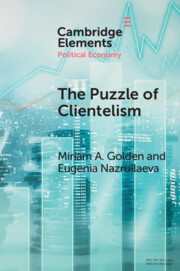Element contents
The Puzzle of Clientelism
Published online by Cambridge University Press: 06 February 2023
Summary
- Type
- Element
- Information
- Series: Elements in Political EconomyOnline ISBN: 9781009323208Publisher: Cambridge University PressPrint publication: 23 February 2023



